|
|
 Los cataros, los inmortales de San Salvador Verdadero, a los que les fueron entregadas las llaves para la salvación de la humanidad, son los discípulos directos de María Magdalena. Han sido ungidos por ella de la misma manera que Cristo. Los cataros, los inmortales de San Salvador Verdadero, a los que les fueron entregadas las llaves para la salvación de la humanidad, son los discípulos directos de María Magdalena. Han sido ungidos por ella de la misma manera que Cristo.
Mil años después todo se repitió. Ellos habían sufrido su Gólgota a través de autos de fe, las hogueras y las torturas, de las manos de los neorabinos romanos… ¡Qué triunfo el de la Iglesia del gran amor!
Durante dos mil años el mundo glorificaba al Cristo solitario, extraño, crucificado. ¡Y ahora glorifica al Cristo multiplicado! Sólo en San Salvador Cristo se multiplicó en más de cien inmortales.
Los inmortales revelaron al Padre del puro amor, ofrecieron una visión de Él y la unión a Él como la mayor práctica y ciencia espiritual.
En la actualidad toda nuestra iglesia es la nueva María Magdalena multiplicada, porque fue concebida de Cristo y da a luz desde arriba, de Cristo. Toda la Gran Iglesia del amor es la novia, que se ha preparado para las nupcias con el Cordero. Ella está dispuesta a concebir de Cristo una nueva humanidad entera.
Es divinizado aquel que se ha transformado en el recipiente inmaculado de la Sabiduría y es capaz de adorar a su prójimo...
Era inmensa la emoción que sentía María Magdalena ante la adoración, y relataba cómo la Sabiduría ama a toda criatura, cómo el Padre adora a cada alma enviada al mundo y qué ayuda les presta. Y, también, que Él las adora millones de veces más en las tentaciones, en los desiertos, en lo pasional. La adoración determina todo el ritmo de la existencia del hombre.
Es divinizado aquel que se ha transformado en el recipiente inmaculado de la Sabiduría y es capaz de adorar a su prójimo. Él ya no seduce a su prójimo con los compuestos turbios y pecaminosos, sino que lo purifica y, adorándole, lo diviniza.
La adoración a la Divinidad lleva a la adoración al prójimo. Es inmenso el potencial de adoración del hombre… Sólo es feliz (¡bienaventurado, absolutamente dichoso!) aquel que tiene liberado el potencial divino del supremo amor.
María Magdalena era el apóstol de la adoración sagrada del catarismo autentico: difundía la atmósfera de adoración junto con la sabiduría, la paz, la sensatez y la calma profunda.
María Magdalena revelaba el misterio más grande en la tierra: las almas han llegado al mundo para que, a través de su pasional, conciban de la Divinidad, lo que no es posible en los cielos...
María Magdalena, la gran anciana, les estaba descubriendo a Cristo de los cataros por primera vez. Ella sabía tocar las cuerdas más recónditas. Ella hablaba sobre tales grandezas de Sabiduría, las cuales el ser humano no podía abarcar.
Ninguna sabiduría humana es capaz de expresar el misterio de la inmaculada concepción de la Divinidad. Su sermón era increíblemente sublime. María Magdalena trasmitía las adorativas vibraciones mírricas de Minné. Los que la oían caían ante ella como la culminación de la Sabiduría, ya que descubrían que no puede existir nada más grandioso.
María revelaba el misterio de la Madre de Dios. Los cristianos idolatraban a la Santa Virgen habiéndola proclamado como la única que había concebido inmaculadamente de Dios. ¡No! Cada alma, cada novia de Cristo, habiéndose hecho pura en grado sumo (purísima de las puras), puede concebir de Cristo.
El Teo-hombre concibe de la Divinidad a la divinidad.
También María revelaba el gran misterio de la tierra. Las almas llegaron al mundo para que a través de su pasional (unción a los sufrimientos, a su pequeño Gólgota) concibieran de la Divinidad. Eso es imposible en los cielos. Por eso la tierra es más que el cielo, explicaba María Magdalena.
Se hace claro, por qué los teogámitas eslavos, que emigraron a Occidente atravesando los Balcanes escapando de las persecuciones por parte de los bárbaros bizantinos, se llamaban los cátaros (puros). Eso no es el orgullo. Hace falta hacerse purísimo de los puros para ser concebido desde arriba y adorar a Cristo como María Magdalena y concebir inmaculadamente de Cristo, como ella.
http://www.loscataros.org/articulos/magdalena
|
|
|
|
|
TCP you need to READ Joinville Memoirs A letter written by Jean de Joinville, friend to French King Louis IX during the 13th century, stated:
The king once told me how several men from among the Albigenses had gone to the Comte de Montfort… and asked him to come look at the body of Our Lord, which had become flesh and blood in the hands of their priest.For Egi...connecting to Himler and Rahn Dr. Guirdham explained that Catharism was a form of dualism, a belief which "has existed from time immemorial" and connected to the ancient sects of Mithras and the Manichaeans. The Cathars also viewed Jesus as the spiritual Son of God.
"To them Christ did not exist in a human but in a spirit body. The Inquisition wrongly translated this as meaning that to the Cathars, Christ was a kind of phantom. The Cathar view was in accordance with that expressed by modern spiritualists and by the adherents of [Rudolf] Steiner [who was to influence the Nazi cult]," said Dr. Guirdham.
http://www.bibliotecapleyades.net/esp_cataros_06.htmSaint Louis REVERED Magdalene Returning from the Seventh Crusade with King Louis IX, one Jean de Joinville in 1254 wrote they "came to the city of Aix in Provence to honor the Blessed Magdalene. . . . We went to the place called Baume, on a very steep and craggy rock, in which it was said that the Holy Magdalene long resided at ë hermitage."As for as Montfort weren't the Cathars ....Gnostics we have the Nag Hammadi Scrolls now like Saint Phillip "And the companion of the Savior is Mary Magdalene. But Christ loved her more than all the disciples and used to kiss her often on her mouth. The rest of the disciples were offended by it and expressed disapproval. They said to him, 'Why do you love her more than all of us?'" Jesus answered them with a lengthy discourse on how "Great is the mystery of marriage!" and how it was "a great power" necessary to the existence of the world. There is an important connection between the gospels only discovered in 1945 and a tract published in the 1330s reportedly by the German mystic Meister Eckehart under the name Schivester Katrei or Sister Catherine. According to authors Picknett and Prince,
"This unusual and outspoken tract. . . contains ideas regarding Mary Magdalene that are only otherwise found in the Nag Hammadi Gospels... She is portrayed as being superior to Peter because of her greater understanding of Jesus, and there is the same tension between Mary and Peter [found in the Nag Hammadi Gospels]. Moreover, actual incidents that are described in the Nag Hammadi texts are mentioned in Sister Catherine's tract." (emphasis in the original)
http://www.bibliotecapleyades.net/esp_cataros_06.htm
_________________
Everything is Connected and there are no
coincidences
|
|
|
|
|
The 13th-century Cistercian monk and chronicler Peter of Vaux de Cernay claimed it was part of Catharist belief that the earthly Jesus Christ had a relationship with Mary Magdalene, described as his concubine. Quote: "Further, in their secret meetings they said that the Christ who was born in the earthly and visible Bethlehem and crucified at Jerusalem was 'evil', and that Mary Magdalene was his concubine It seems that the Cathars had the belief that Jesus was not celibate The Cathars got very dangerous when that belief was spoken aloud The Albigensian fought in the Crusades along side the Knights Templar and Saint Louis the close contact may have brought the knowledge of the Cathars into the Templars knowledge It is obvious Sauniere loved his housekeeper very much to leave her his property. He did not leave it to the Church. A Sacred Marriage http://en.wikipedia.org/wiki/Mary_Magdalene
_________________
Everything is Connected and there are no
coincidences
|
|
|
|
|
Now Nic Did you see all the Raiders movie Indie Jones goes after many power objects against the Nazis  this is the Crusader Knight and the Holy Grail one of my favorites You chose wisely    Yes agreed Montsegur has more legends than Rennes except with the Corbu legend of the Treasure of Blanche Castile and in that there is a connection |
|
|
|
|
n 1931 he traveled to the Pyrenees region of southern France where he conducted most of his research. Aided by the French mystic and historian Antonin Gadal, Rahn argued that there was a direct link between Wolfram Von Eschenbach's Parzival and the Cathar Grail mystery. He believed that the Cathars held the answer to this sacred mystery and that the keys to their secrets lay somewhere beneath the mountain pog where the fortress of Montségur remains, the last Cathar fortress to fall during the Albigensian Crusade.
Rahn believed it was possible to trace the Cathars, who guarded the Holy Grail in their castle at Montsegur, back to Druids who converted to Gnostic Manichaeism. The Druids in Britain were forerunners of the Celtic Christian Church. He saw that the culture of the medieval Cathar stronghold of Languedoc bore strong a resemblance to the ancient Druids. Their priests were akin to the Cathar Parfaits. The Cathar secret wisdom being preserved by the later Troubadours, the travelling poets and singers of the medieval courts of France-M. Sabeheddin, [Countermedia][1].
http://en.wikipedia.org/wiki/Otto_RahnRahn was found frozen to death on a mountainside near Söll (Kufstein, Tyrol) in Austria. His death was officially ruled a suicide. Rahn has been described as the inspiration behind the Indiana Jones movie Raiders of the Lost Ark,[2] although neither George Lucas nor Steven Spielberg has ever mentioned anything about his having inspired the film "My ancient forbears were heathens, and my ancestors were heretics. For their exoneration I collect the pieces that Rome left over." (Luzifers Hofgesind, i.e. Lucifer's Court)
_________________
Everything is Connected and there are no
coincidences
|
|
|
|
|
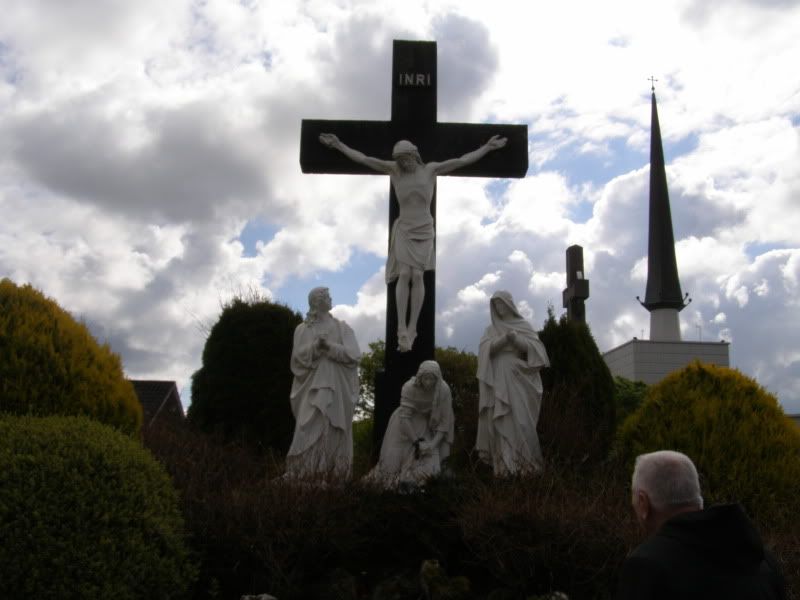 The Vincentians are connected with Our Lady of Knock... Sé do bheath' a Mhuire, atá lán de ghrásta, tá an Tiarna leat. Is beannaithe thú idir mná agus is beannaithe toradh do bhruinne losa. A Naomh Mhuire, a mháthair Dé, guí orainn na peacaithe, anois is ar uair ar mbás. Amen. Archbishop John Joseph Lynch of Toronto made a visit to the parish and claimed he had been healed by the Virgin of Knock The Knock vision in 1879 and dealt with the Lamb of God Andrews article http://www.andrewgough.com/boudetdecoded.htmlthe Lamb of God was on tombstone next to Boudet there is a raised area on Boudet's tomb looks like a book The expression on the Raised Level reads I.X.O.I.S and when viewed upside down, 3.I.0.X.I. It is in this view – upside down – that researchers believe the Raised Level starts to reveal its secrets.
Raised Level mirrors the size of the first edition of Boudet’s puzzling 1886 book; La vraie langue celtique et le cromleck de Rennes-les-Bains (Note 1). Additionally, the ‘310’ portion of the upside down view matches the number of pages in Boudet’s book: 310. Lastly, the ‘XI’ portion of the same view is thought to reference Chapter 11 of Boudet’s book, which many believe to contain a treasure map. Collectively, these observations have led researchers to conclude that the Raised Level conceals a secret - most likely to do with treasure.
Ironically, the tomb next to Boudet portrays a closed book – with clearly visible pages on its side. The same is true of Berenger Sauniere’s priestly regalia. Each, coincidently, are examples of a popular symbol of the day called the Apocalyptic Lamb. the family name on the tomb with the lamb is BGUSQUET I'll write a note Andrew wrote at the end of this AWESOME article Note 2: The researchers in the private Rennes-le-Chteau form on Terug naar de Bron have studied this and other related aspects of the life of Henri Boudet and deserve credit for proving beyond reasonable doubt that the Raised Level on the tombstone to mean ‘Jesus’.and Sauniere's regalia  The Apocalyptic Lamb: The Tomb next to Boudet’s and Saunière’s regalia – close up |
|
|
|
|
Quote:
«Une seule chose était indispensable, lorsque, rencontrant une caverne, propre à servir d’abri temporaire, ils désiraient préparer, à un ardent foyer, le repas nécessaire ; c’était le silex, dont le nom basque est suarria, c’est à dire, un trait de lumière ou étincelle courant ça et là par l’effet du choc de deux objets dont l’un, le silex, est penché de côté, et l’autre, acier ou fer est brandi, -to sway (soué), faire pencher de côté, brandir, - to hare, courir ça et là, - ray, ré, trait de lumière ».
|
|
|
|
|
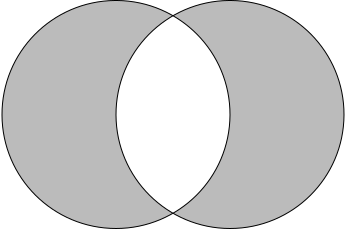 Vesica piscis Vesica piscisTAURO/TORO/PLEYADES/7 COLINAS DEL VATICANO
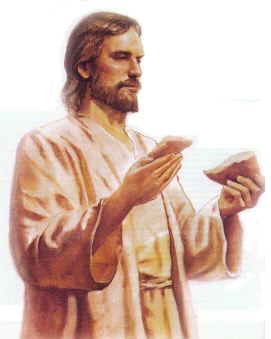 Fermentation - nigredo - bread and wine of Christ  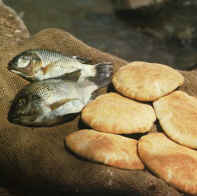 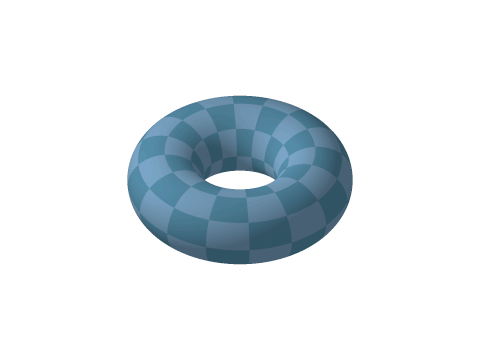 La vesica piscis (vejiga de pez en latín) es un símbolo hecho con dos círculos del mismo radio que se intersecan de manera que el centro de cada círculo está en la circunferencia del otro. Esta forma se denomina también mandorla (que significa "almendra" en italiano). Era un símbolo conocido en las antiguas civilizaciones de Mesopotamia, África y Asia.
CATOLICO/CAT-OLICO/CAT-EDRAL/CAT/GATO-EL OJO DEL GATO TIENE LA MISMA FORMA QUE LA DEL SEXO FEMENINO "VESCICA PISCIS"
 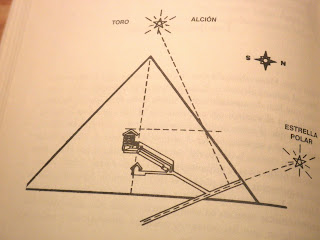  
  
Biología Animal: el ojo de los gatos

A diferencia de los humanos, los felinos y más precisamente los gatos domésticos cuentan con ojos que pueden ver casi en lo que nosotros percibimos como plena oscuridad. Cómo ven los gatos y algunas preguntas más serán respondidas hoy en OjoCientífico.
Gatos y humanos
Es verdad que los gatos pueden ver mejor durante la noche que los humanos, pero sucede totalmente por el contrario durante las horas de sol.
Esta cualidad de poder ver mejor en la oscuridad es compartida por varios animales entre ellos los perros. Esto se debe a que estos animales cuentan con un tapetum lucidum, esto es un tejido que se ubica en la parte posterior de los ojos de los animales.

El tapetum lucidum hace que el ojo absorba mucha más luz antes de llegar a la retina. De esta manera con menos luz ellos pueden ver mejor porque igualmente más luz está entrando en su retina.
Por otra parte como dijimos estos cuentan con peor visión durante el día, teniendo así un umbral de detección de luz siete veces menor que las personas, el tapetum lucidum también es el culpable de esto ya que por permitir mayor iluminación debe limitar la calidad de la visión durante períodos de mucha luz.

Visión
Durante las horas de luz el gato cierra constantemente su iris de esta manera consigue una mejor y más fina profundidad de campo.
Con profundidad de campo nos referimos al espectro nítido de visión. Si ustedes ponen un dedo al frente suyo podrán ver que pueden enfocar su vista hacia el dedo o hacia el fondo, eso es controlar la profundidad de campo de la vista.
Los gatos son animales depredadores, por esta razón al igual que el resto de los depredadores estos cuentan con los ojos al frente de la cabeza. De esta manera pierden un amplio espectro de visión hacia los lados, pero ganan visión en profundidad, para así poder cazar mejor.

Los felinos cuentan con una banda central dentro del ojo llamada raya visual. Gracias a esta raya estos pueden distinguir cierta cantidad de colores, pero no todos.
Entre los colores que pueden distinguir encontramos:
- tonos verdosos
- azul
- celeste
Sin embargo se cree que no pueden ver los colores con mucha definición, y solamente pueden percibirlos a corta distancia.
Otra característica de la visión gatuna es su amplitud de vista. Estos cuentan con una amplitud visual de unos 200º (grados). Por otro lado los humanos contamos con un rango aproximado de 180º. Aunque esto no parezca mucho, lo es.
La membrana nictitante es un párpado extra con el que cuentan algunos animales incluyendo los gatos. Este párpado extra sirve como protección, tanto para bacterias como para posibles amenazas mayores.
|
|
|
|
|
Schrödinger Cat eye nebula Ammonia avenue Draconian suicide Alan Parsons project - La Sagrada Familia - Eye in the sky Gaudi Finca Guell Hesperides dragon Barcelona - Cat-a-lonia 4 Cats restaurant The paradox has been the subject of much controversy both scientifically and philosophically, to the point that Stephen Hawking has said, "every time I hear about that cat, I begin to get my gun", referring to the quantum suicide, a variant of the experiment of Schrödinger. http://en.wikipedia.org/wiki/Schr%C3%B6dinger%27s_catSchrödinger's cat is a thought experiment, sometimes described as a paradox, devised by Austrian physicist Erwin Schrödinger in 1935. It illustrates what he saw as the problem of the Copenhagen interpretation of quantum mechanics applied to everyday objects. The scenario presents a cat that might be alive or dead, depending on an earlier random event. Although the original "experiment" was imaginary, similar principles have been researched and used in practical applications. The thought experiment is also often featured in theoretical discussions of the interpretation of quantum mechanics. In the course of developing this experiment, Schrödinger coined the term Verschränkung (entanglement). Origin and motivation Schrödinger intended his thought experiment as a discussion of the EPR article—named after its authors Einstein, Podolsky, and Rosen—in 1935.[1] The EPR article highlighted the strange nature of quantum entanglement, which is a characteristic of a quantum state that is a combination of the states of two systems (for example, two subatomic particles), that once interacted but were then separated and are not each in a definite state. The Copenhagen interpretation implies that the state of the two systems undergoes collapse into a definite state when one of the systems is measured. Schrödinger and Einstein exchanged letters about Einstein's EPR article, in the course of which Einstein pointed out that the state of an unstable keg of gunpowder will, after a while, contain a superposition of both exploded and unexploded states. To further illustrate the putative incompleteness of quantum mechanics, Schrödinger describes how one could, in principle, transpose the superposition of an atom to large-scale systems. He proposed a scenario with a cat in a sealed box, wherein the cat's life or death depended on the state of a subatomic particle. According to Schrödinger, the Copenhagen interpretation implies that the cat remains both alive and dead (to the universe outside the box) until the box is opened. Schrödinger did not wish to promote the idea of dead-and-alive cats as a serious possibility; quite the reverse, the paradox is a classic reductio ad absurdum.[2] The thought experiment illustrates the counterintuitiveness of quantum mechanics and the mathematics necessary to describe quantum states. Intended as a critique of just the Copenhagen interpretation (the prevailing orthodoxy in 1935), the Schrödinger cat thought experiment remains a typical touchstone for all interpretations of quantum mechanics. Physicists often use the way each interpretation deals with Schrödinger's cat as a way of illustrating and comparing the particular features, strengths, and weaknesses of each interpretation. [edit]The thought experiment Schrödinger wrote:[3][2] One can even set up quite ridiculous cases. A cat is penned up in a steel chamber, along with the following device (which must be secured against direct interference by the cat): in a Geiger counter, there is a tiny bit of radioactive substance, so small that perhaps in the course of the hour, one of the atoms decays, but also, with equal probability, perhaps none; if it happens, the counter tube discharges, and through a relay releases a hammer that shatters a small flask of hydrocyanic acid. If one has left this entire system to itself for an hour, one would say that the cat still lives if meanwhile no atom has decayed. The psi-function of the entire system would express this by having in it the living and dead cat (pardon the expression) mixed or smeared out in equal parts. It is typical of these cases that an indeterminacy originally restricted to the atomic domain becomes transformed into macroscopic indeterminacy, which can then be resolved by direct observation. That prevents us from so naively accepting as valid a "blurred model" for representing reality. In itself, it would not embody anything unclear or contradictory. There is a difference between a shaky or out-of-focus photograph and a snapshot of clouds and fog banks. —Erwin Schrödinger, Die gegenwärtige Situation in der Quantenmechanik (The present situation in quantum mechanics), Naturwissenschaften (translated by John D. Trimmer in Proceedings of the American Philosophical Society) Schrödinger's famous thought experiment poses the question, when does a quantum system stop existing as a superposition of states and become one or the other? (More technically, when does the actual quantum state stop being a linear combination of states, each of which resembles different classical states, and instead begins to have a unique classical description?) If the cat survives, it remembers only being alive. But explanations of the EPR experiments that are consistent with standard microscopic quantum mechanics require that macroscopic objects, such as cats and notebooks, do not always have unique classical descriptions. The thought experiment illustrates this apparent paradox. Our intuition says that no observer can be in a mixture of states—yet the cat, it seems from the thought experiment, can be such a mixture. Is the cat required to be an observer, or does its existence in a single well-defined classical state require another external observer? Each alternative seemed absurd to Albert Einstein, who was impressed by the ability of the thought experiment to highlight these issues. In a letter to Schrödinger dated 1950, he wrote: You are the only contemporary physicist, besides Laue, who sees that one cannot get around the assumption of reality, if only one is honest. Most of them simply do not see what sort of risky game they are playing with reality—reality as something independent of what is experimentally established. Their interpretation is, however, refuted most elegantly by your system of radioactive atom + amplifier + charge of gunpowder + cat in a box, in which the psi-function of the system contains both the cat alive and blown to bits. Nobody really doubts that the presence or absence of the cat is something independent of the act of observation.[4] Note that no charge of gunpowder is mentioned in Schrödinger's setup, which uses a Geiger counter as an amplifier and hydrocyanic poison instead of gunpowder. The gunpowder had been mentioned in Einstein's original suggestion to Schrödinger 15 years before, and apparently Einstein had carried it forward to the present discussion.
| Attachments: |

cat eye 1111 gaudi.JPG [ 53.24 KiB | Viewed 15703 times ]
|
|
|
|
|
|
Laden
(chemistry): In the form of an adsorbate or adduct.
Once laden it is easy to regenerate the adsorbent and retrieve the adsorbed species as a gas.
adduct (plural adducts)
(chemistry) The product of an addition reaction
Ammonia or azane is a compound of nitrogen and hydrogen with the formula NH3. It is a colourless gas with a characteristic pungent odor. Ammonia contributes significantly to the nutritional needs of terrestrial organisms by serving as a precursor to food and fertilizers. Ammonia, either directly or indirectly, is also a building-block for the synthesis of many pharmaceuticals and is used in many commercial cleaning products. Although in wide use, ammonia is both caustic and hazardous. In 2006, worldwide production was estimated at 146.5 million tonnes.[7]
Ammonia solutions should not be mixed with halogens, as toxic and/or explosive products are formed. Prolonged contact of ammonia solutions with silver, mercury or iodide salts can also lead to explosive products: such mixtures are often formed in qualitative chemical analysis[disambiguation needed ], and should be lightly acidified but not concentrated (<6% w/v) before disposal once the test is completed.
Ammonia has been detected in the Draco Nebula and in one or possibly two molecular clouds, which are associated with the high-latitude galactic infrared cirrus. The finding is significant because they may represent the birthplaces for the Population I metallicity B-type stars in the galactic halo that could have been borne in the galactic disk.[77
| Attachments: |

BIN LADON.JPG [ 67.38 KiB | Viewed 15666 times ]
|
|
|
|
|
|
 Cat-hars Cat - Aryans Cat-harsis Cat Aryan Isis Catharsis or katharsis (Greek: κάθαρσις) is a Greek word meaning "cleansing" or "purging". It is derived from the verb καθαίρειν, kathairein, "to purify, purge," and it is related to the adjective καθαρός, katharos, "pure or clean."  |
|
|
|
|
Zionist cat with potato pancake kippah.  Torus (geometry) For other uses of this term, see Bull. In geometry, a torus is a surface of revolution generated by revolving a circle about an exterior straight coplanar (in the background and does not cut it). The word "bull" comes from the Latin word torus, which in Castilian means "toro" or "murecillo" which is a molding of the base rounded, shaped like a loaf of bread.1 2     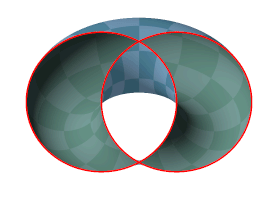 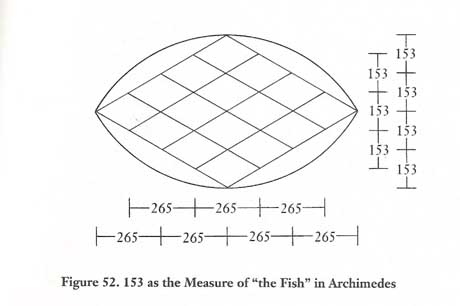 Arch-i-medes Middle of the Arch i = 9 Galactic center and clockwise spiral 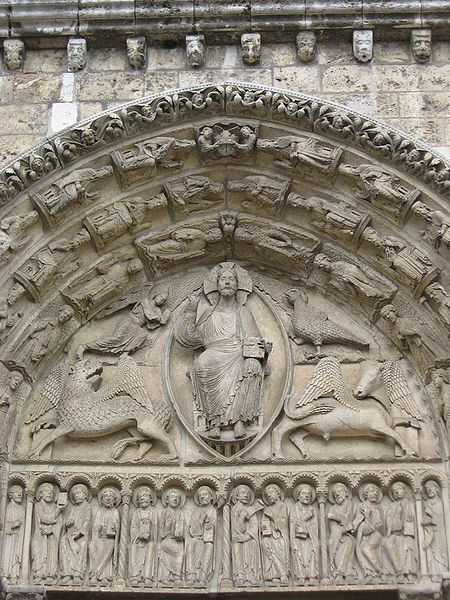 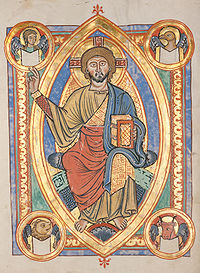   Don 4 - 15 -14 Nut - Zinc - borromean rings knot - Valknut etc Crown in O = 15 = 1111 Don -key - Jesus - Praesepe - Beehive cluster 4 Scorpius - 15 =1111 - 14 Leo ( Judea - Lion's Gate ) http://en.wikipedia.org/wiki/King_cakePurple royal colour - Gamma rays - purple rain  Kerli - Bubble Goth  WASHINGTON -- NASA's Fermi Gamma-ray Space Telescope has unveiled a previously unseen structure centered in the Milky Way. The feature spans 50,000 light-years and may be the remnant of an eruption from a supersized black hole at the center of our galaxy. "What we see are two gamma-ray-emitting bubbles that extend 25,000 light-years north and south of the galactic center," said Doug Finkbeiner, an astronomer at the Harvard-Smithsonian Center for Astrophysics in Cambridge, Mass., who first recognized the feature. "We don't fully understand their nature or origin." H2S - SS Waffen disulfur - rotten egg fermentation galaxy code Jesus fermented wine and bread. In chemistry, a disulfide bond (Br.E. disulphide bond) is a covalent bond, usually derived by the coupling of two thiol groups. The linkage is also called an SS-bond or disulfide bridge. The overall connectivity is therefore R-S-S-R. The terminology is widely used in biochemistry. In formal terms, the connection is a persulfide, in analogy to its congener, peroxide (R-O-O-R), but this terminology is obscure and is no longer used (except in reference to R-S-S-H or H-S-S-H compounds). Hydrogen sulfide occurs naturally in oil 'raw' (unprocessed), natural gas, volcanic gases and hot springs. There may also be in swampy waters, ponds or stagnant water, drains, ponds flour or fish oil, fishing boats and sewer In organic chemistry, a thiol ( /ˈθaɪˌɒl/) is an organosulfur compound that contains a carbon-bonded sulfhydryl (–C–SH or R–SH) group (where R represents an alkane, alkene, or other carbon-containing group of atoms). Thiols are the sulfur analogue of alcohols (that is, sulfur takes the place of oxygen in the hydroxyl group of an alcohol), and the word is a portmanteau of "thio" + "alcohol," with the first word deriving from Greek θεῖον ("thion") = "sulfur". [note 1] The –SH functional group itself is referred to as either a thiol group or a sulfhydryl group. Many thiols have strong odors resembling that of garlic. Thiols are used as odorants to assist in the detection of natural gas (which in pure form is odorless), and the "smell of natural gas" is due to the smell of the thiol used as the odorant. Thiols are often referred to as mercaptans.[2][3] The term mercaptan is derived from the Latin mercurium captans (capturing mercury)[4] because the thiolate group bonds so strongly with mercury compounds.  Mercury - quick silver - speed - messenger of the Gods - black women - the black Virgin black sun code with Dragon tongue at the back - new dawn cockerel - caduceus 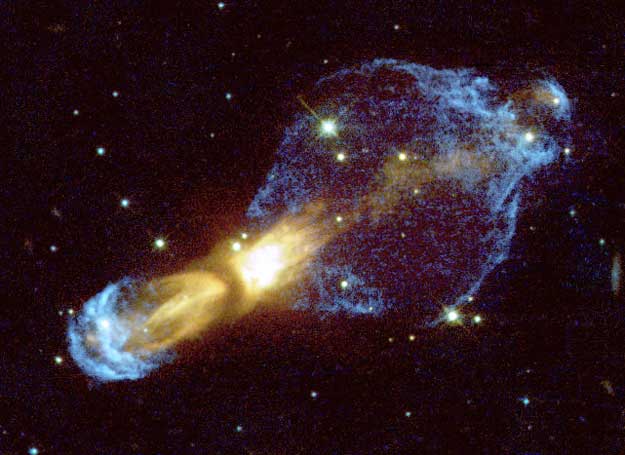 The Calabash Nebula, also known as the Rotten Egg Nebula or by its technical name OH 231.84 +4.22, is a protoplanetary nebula (PPN) 1.4 light years (13 Pm) long and located some 5,000 light years (47 Em) from Earth in the constellation Puppis. Violent gas collisions that produced supersonic shock fronts in a dying star are seen in a new, detailed image from NASA's Hubble Space Telescope. The object is sometimes called the Rotten Egg Nebula because it contains a relatively large amount of sulfur. The densest parts of the nebula are composed of material ejected recently by the central star and accelerated in opposite directions. This material, shown as yellow in the image, is zooming away at speeds up to one and a half million kilometers per hour (one million miles per hour). Most of the star's original mass is now contained in these bipolar gas structures. 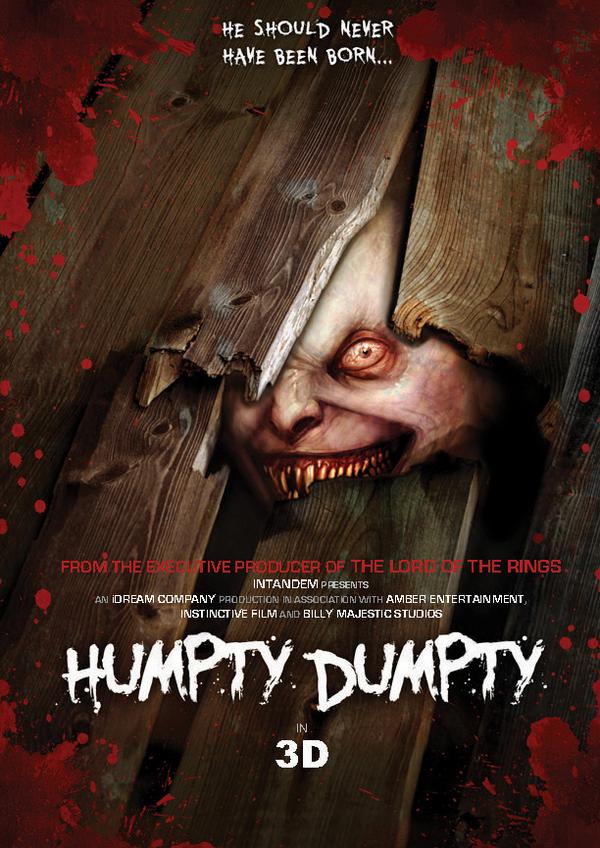 Eccentricity of the moon being speeded by Mercury the messenger of the Gods towards the Gaussian chaos bell of normal distribution, - Ordo ab Chao, here together with the cockerel herald of the golden new age. Quick silver is the alchemical mercury, it quicks, speeds up the eccentricity of the moon mon-key galactic center fractal and also planet Mercury 1 mon-key whose oribtal eccentricity escapes the Newtonian principles of eliptical orbits, actually pretended to be explained with the curvature of time space. The spiral of time is coming to an end and the time W axis of the hypercbue is speeding up till the rhombic dodecahedron formation, or Jesus crucfied at his 33- 1111 - INRI - IGNIS NATURA RENOVATUR INTEGRAM Abstract A recent analysis of a Lunar Laser Ranging (LLR) data record spanning 38.7 yr revealed an anomalous increase of the eccentricity e of the lunar orbit amounting to ? yr-1. The present-day models of the dissipative phenomena occurring in the interiors of both the Earth and the Moon are not able to explain it. In this paper, we examine several dynamical effects, not modelled in the data analysis, in the framework of long-range modified models of gravity and of the standard Newtonian/Einsteinian paradigm. It turns out that none of them can accommodate ?. Many of them do not even induce long-term changes in e; other models do, instead, yield such an effect, but the resulting magnitudes are in disagreement with ?. In particular, the general relativistic gravitomagnetic acceleration of the Moon due to the Earth’s angular momentum has the right order of magnitude, but the resulting Lense-Thirring secular effect for the eccentricity vanishes. A potentially viable Newtonian candidate would be a trans-Plutonian massive object (Planet X/Nemesis/Tyche) since it, actually, would affect e with a non-vanishing long-term variation. On the other hand, the values for the physical and orbital parameters of such a hypothetical body required to obtain at least the right order of magnitude for ? are completely unrealistic: suffices it to say that an Earth-sized planet would be at 30 au, while a jovian mass would be at 200 au. Thus, the issue of finding a satisfactorily explanation for the anomalous behaviour of the Moon’s eccentricity remains open. On the anomalous secular increase of the eccentricity of the orbit of the Moon
|
|
|
|
|
15 April 1912 Fordicidia human sacrifice for the underworld Gods ? 15 = 1111 binary - quince - golden apples.
Helios sun God Sol Invictus Titan - Xp - In hoc signo Vinces - 4 Chimneys 1111 code 100 years before 2012 event.
For the Greek sun-deity sometimes referred to as "Titan", see Helios. For other uses, see Titan.
The equivalent of Helios in Roman mythology was Sol, specifically Sol Invictus.
In ancient Roman religion, the Fordicidia was a festival of fertility, held April 15, that pertained to animal husbandry. It involved the sacrifice of a pregnant cow to Tellus, or Mother Earth, in proximity to the festival of Ceres (Cerealia) on April 19.[1]
On the Roman religious calendar, the month of April was in general preoccupied with deities who were female or ambiguous in gender, opening with the Feast of Venus on the Kalends.[2] Several other festivals pertaining to farm life were held in April: the Parilia, or feast of shepherds, on April 21; the Robigalia on April 25, to protect crops from blight;[3] and the Vinalia, or one of the two wine festivals on the calendar,[4] at the end of the month. Of these, the Fordicidia and Robigalia are likely to have been of greatest antiquity. William Warde Fowler, whose early 20th-century work on Roman festivals remains a standard reference, asserted that the Fordicidia was "beyond doubt one of the oldest sacrificial rites in Roman religion."[5]
Clearly anthropomorphic deities such as the Etruscan trinity of Juno, Jupiter and Minerva spoke well with the Greek deities such as Juno = Hera, Jupiter = Zeus and Minerva = Pallas and became conflated with them, therefore it was inevitable that the Romans took the Greek ideas' to clothe their own austere set of deities. By the same token it was also inevitable that Oriental cults got included, albeit reluctantly, into the pantheon; thus came Bacchus (Dionysus), Cybele and Isis. However, these did not come to corrupt a race of pious puritans. They had been beaten to it, the native gods such as Fortuna, Virilis, Flora and Anna Perenna had a licentiousness all their own. We should be aware that the simple rustic is seldom a puritan, blood sacrifices such as on Fordicidia, when a cow in calf was killed, were common and human sacrifice, although extremely rare [illegal after 97 B.C.], was not unheard of.
Wool was regularly used in Roman religious rites. At the Festival of the Lares of the Crossroads, woolen images of men and women and balls of wool--the images representing all free men and women, the balls representing all slaves--were suspended at night at the crossroads and probably also at the housedoors. These represented a substitute for an earlier human sacrifice to the spirits of the dead in the underworld who might harm the living. Festus says: 85 " . . . As many balls as there are slaves and as many effigies as there are freeborn men and women in the family are set up, that the spirits may spare the living and be content with these balls as substitutes." That human sacrifice prevailed in Rome up to 97 B.C. is proved by a decree of the Senate of that year which provided "that no human being be immolated. . . ." 86 In the rites of the Sacrifice of the Pregnant Cow (Fordicidia), Ovid represents Numa slaying two ewes, whose fleece he spreads on the ground, and on these he lies in worshiping Faunus. 87
_________________
E.T.A.E
|
|
|
|
|
CATOLICO/CAT/GATO/GATE/PUERTA
|
|
|
|
|
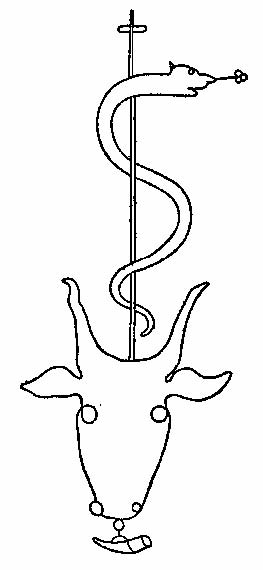 Oh by the way here's a Cathar Symbol of a serpent spitting Blue Apples. -> Wisdom from the snake-> Gnosis.
Quote:
THE MOTHER SUBSTANCE E.A., we are told, came to Earth from Heaven in search of gold, rare metals and radioactive materials, such as uranium or cobalt. The latter were described as the Lower World’s “blue stones” that could transmute a person into an El or “Shining One,” i.e. a Pure One or an Aryan. As the Sumerian god of smithcraft and alchemy, a priest hood developed around E.A.’s alchemical teachings. They were symbolized by the  , the symbol for the fifth essence or quintessence, also called wood, or the Word, the exotic ‘black’ (hidden, occult) pure mother substance upon which the world is built.  is a cluster of grapes (or blue apples as they are called in Rennes-le-Chateau). The cluster of grapes later became cryptograms that were extremely important to the Essenes and the Gnostic Grail heretics that they held sacred and secret. Cathar watermarks showed a serpent hanging on a cross spitting the Word  symbol. If Jean Luc Chaumeil told me it was raining I would put my sun cream and my sun hat on. He threatened to sue me once you know. Have a nice day.
|
|
|
 Primer Primer
 Anterior
10 a 24 de 69
Siguiente Anterior
10 a 24 de 69
Siguiente Último
Último
|

